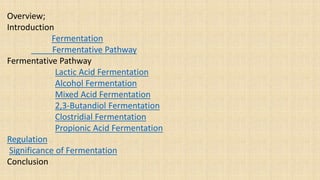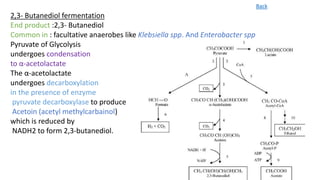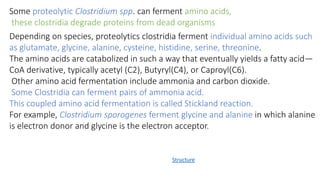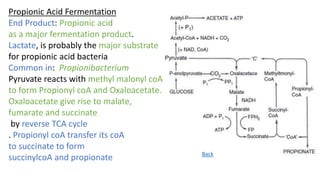Fermentation is a metabolic process used by microorganisms to break down organic compounds in the absence of oxygen. Major fermentation pathways include lactic acid fermentation, alcohol fermentation, and mixed acid fermentation. Lactic acid fermentation produces lactic acid, alcohol fermentation produces ethanol and carbon dioxide, and mixed acid fermentation produces various acids. Fermentation is regulated by enzymes and plays a significant role in various foods and beverages as well as human physiology.























